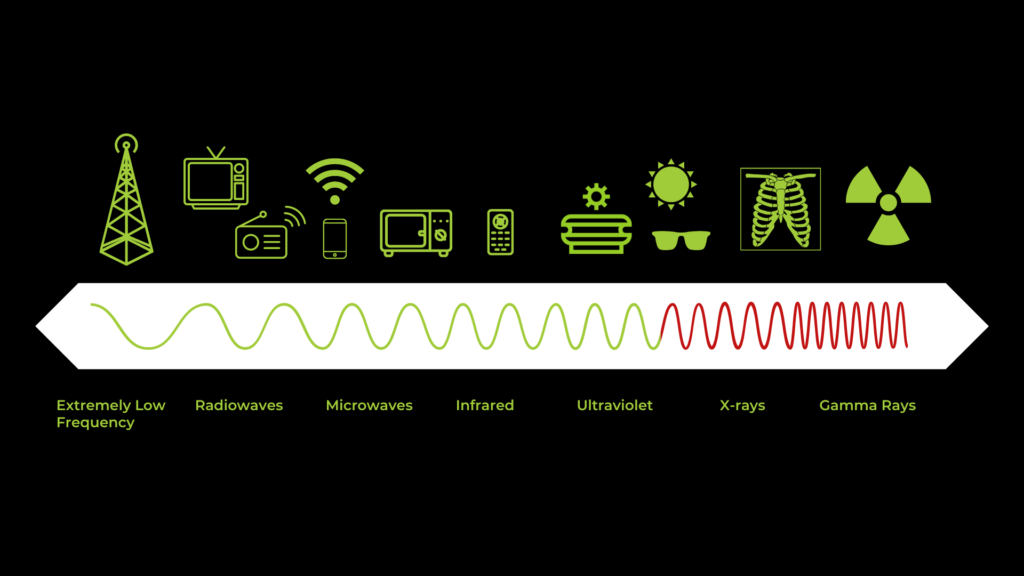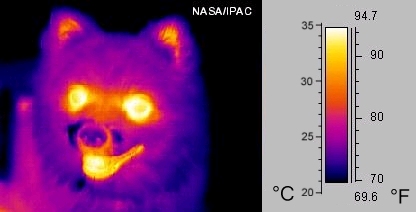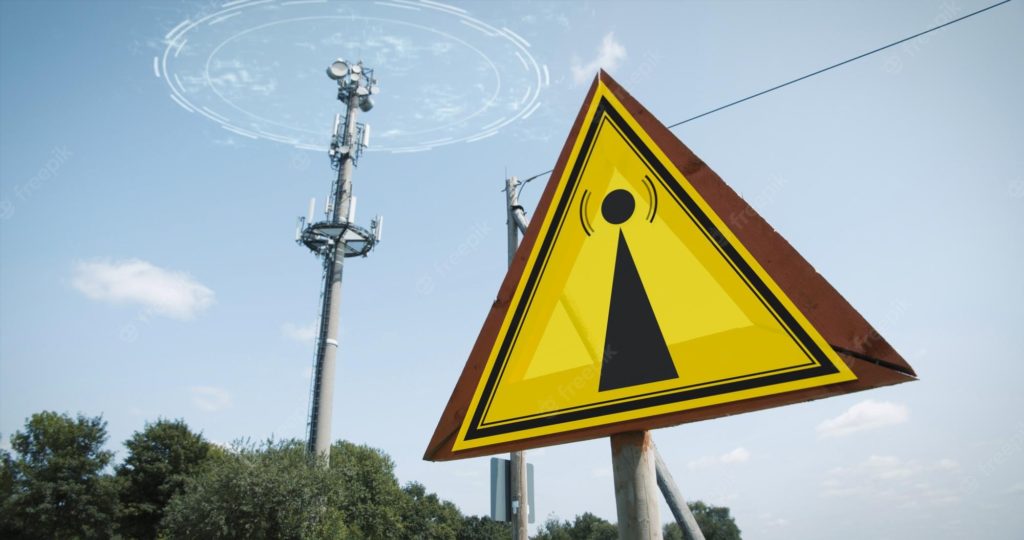Did you know that even on cloudy days, there’s a risk of sunburn from ultraviolet (UV) radiation? Most of it we receive when the sun’s rays are strongest, between 10 AM and 4 PM, but clouds can only reduce our exposure. This is one example of non-ionising radiation that humans get from the environment.
UV, radio waves, microwaves and infrared – all examples of non-ionising radiation are found on the lower energy side of the electromagnetic spectrum. But even with lower energy, what does exposure to non-ionising radiation mean to our health?

Non-Ionising vs Ionising Radiation
As you can see in the EMF spectrum, the longer the wavelength, the lower the energy. Those on the left end are what we call Non-Ionising Radiation.
Unlike ionising radiation, it doesn’t have enough energy to remove electrons from atoms and molecules. Since its energy is not high enough, it can’t damage DNA directly when it passes through body tissues. Instead, its best-known effect is heating of tissues. For example, exposure to a power of 600 mW for 50 minutes would raise brain temperature by 0.08°C – 0.19°C. Another one is microwave radiation heating water and food quickly.
Radio Waves or Radiofrequency (RF) – Used in communications, radio waves are a type of electromagnetic radiation that have much longer wavelength than visible light.
Microwave Radiation (MW) – While RF may be absorbed throughout the body, MW is absorbed near the skin. The most common use for this is in microwave ovens but it can also be used to detect speeding cars, drying and curing plywood, and curing rubber and resins.
Infrared Radiation (IR) – Humans detect IR as heat but unlike fire, IR doesn’t emit visible light. We can only “see” it in footage of infrared and thermal cameras that detect the infrared waves emitting from warm humans and animals.

Ultraviolet Radiation (UV) – Sources of UV include UV lasers, black lights and the sun. In the spectrum, UV occurs between ionising and non-ionising radiation. UV radiation in normal levels can be helpful and produce vitamin D. As recommended by the World Health Organisation, 5 to 15 minutes of sun exposure 2 to 3 times a week can get us enough vitamin D.
Non-Ionising Radiation in Occupational Setting
Non-ionising radiation is found in a wide range of occupational settings like telecommunications. Artificial sources include powerlines, electrical wiring and common appliances like televisions and computers. Electrical supply workers can be exposed to magnetic and electric fields while office workers get exposed to lower levels of non-ionising radiation when using computers and photocopying machines.

Should We Be Worried About Non-Ionising Radiation?
Electromagnetic field sources like power lines and base stations have been a focus of health concerns in recent years. Studies have classified everyday magnetic field exposure as “possibly carcinogenic” but current evidence does not yet confirm the causal relationship.
While research continues, the World Health Organisation (WHO) has given risk management advice like strict adherence to existing safety standards, putting up protective measures like barriers around sources, consulting with the public about base stations in the community, and having an effective communication system of health information to raise awareness.
Real Time Radiation Monitoring Devices
Looking for area radiation monitors or personal radiation monitoring devices? You can count on SensaWeb. With our monitors, you can easily detect and interdict radioactive materials. Connect with us here or our email address: info@sensaweb.com.au. You can also call us at +61 415 409 467.